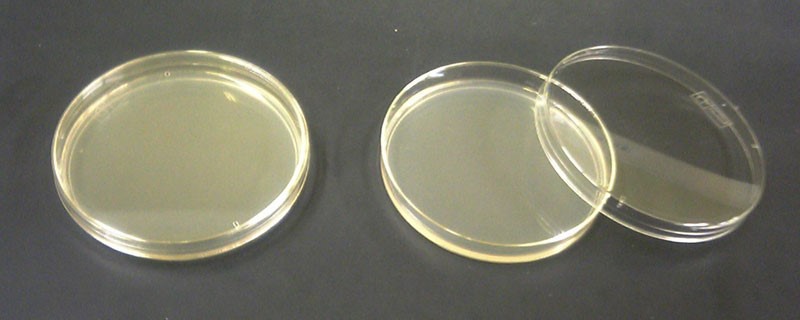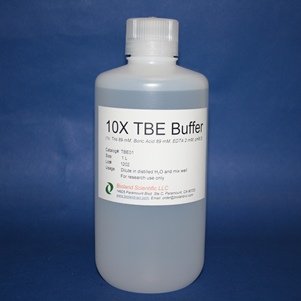First, determine the best agarose powder for your application. Agarose LE works best for analysis. Nucleic acids from 50 bp to 25 kb are recommended for cloning experiments. High-resolution agaroses are ideal for analyzing nucleotides below 1 kb. Low melting (LM) agars facilitate the isolation and purification of large intact DNA fragments and are recommended for cloning experiments and enzymatic

First, determine the best agarose powder for your application. Agarose LE works best for analysis. Nucleic acids from 50 bp to 25 kb are recommended for cloning experiments. High-resolution agaroses are ideal for analyzing nucleotides below 1 kb. Low melting (LM) agars facilitate the isolation and purification of large intact DNA fragments and are recommended for cloning experiments and enzymatic digestion.
In the table below, Sigma agarose powder products are listed , which you can choose depending on your test.
| Product no. | Description | Sulfate | Gel Strength (g/cm 2 ) |
Gelling Temp. (°C) |
Melting Temp. (°C) |
EEO |
|---|---|---|---|---|---|---|
| A6013 | Agarose Type I: Low EEO | ≤0.15% | ≥1200 at 1.0% | 36±1.5 at 1.5% Gel Point |
N/A | 0.09-0.13 |
| A0169 | Agarose Type IA: Low EEO | ≤0.2% | ≥1200 at 1.0% | 36±1.5 at 1.5% Gel Point |
88±1.5 | 0.09-0.13 |
| A0576 | Agarose Type IB: Low EEO
|
≤0.12% | ≥3200 at 1.5% | 36±1.5 at 1.5% Gel Temp. |
88±1.5 | ≤0.12 |
| A9539 | Agarose: Low EEO, For Routine Use Molecular Biology Reagent
|
≤0.15% | ≥1200 at 1.0% | 36±1.5 at 1.5% Gel Point |
N/A | 0.09-0.13 |
| A4679 | Agarose: Low EEO, For Immunoelectrophoresis Electrophoresis Reagent Suitable for standard immunoelectrophoresis and immunodiffusion |
≤0.20% | ≥1200 at 1.0% | 2.0±36 at 1.5% Gel Point |
88±2.0 at 1.5% | 0.09-0.13 |
| AGRLE-RO | Agarose: Low EEO For use in standard gel electrophoresis |
≤0.14% | ≥1200 at 1.0% ≥2500 at 1.5% | 36±1.5 at 1.5% Gel Temp. | 88±1.5 at 1.5% | 0.05-0.13 |
| A6877 | Agarose Type II: Medium EEO | ≤0.20% | ≥1000 at 1.0% | 36±1.5 at 1.5% Congealing Temp. | N/A | 0.16-0.19 |
| A9918 | Agarose Type II-A: Medium EEO | ≤0.25% | ≥1000 at 1.0% | 36±1.5 at 1.5% Gel Point |
88±1.5 | 0.16-0.19 |
| A6138 | Agarose Type III: High EEO | ≤0.20% | ≥650 at 1.0% | 36±1.5 at 1.5% Gel Temp. |
N/A | 0.23-0.26 |
| A9793 | Agarose Type III-A: High EEO | ≤0.25% | ≥750 at 1.0% | 36±1.5 at 1.5% Gel Temp. |
N/A | 0.23-0.26 |
| 05066 | Agarose: High EEO For Molecular Biology DNase, RNase, Phosphatases, Proteases: none detected. |
≤0.6% | ≥1500 | 34-37 at 1.5% Gel Temp. |
N/A | 0.23-0.27 |
| A3643 | Agarose Type IV: Special High EEO
|
N/A | N/A | N/A | N/A | ≥0.30 |
| A5304 | Agarose: Special High EEO Electrophoresis Reagent Suitable for counterimmunoelectrophoresis and immunoelectrophoretic techniques with significant cathodal migration. |
≤0.2% | ≥700 at 1.0% | 36±1.5 at 1.5% Gel Point |
N/A | ≤0.40 |
| A7174 | Agarose Type VI-A: High Gelling Temp. | ≤0.20% | ≥900 at 1.0% | 41±1.5 at 1.5% Gel Point |
N/A | ≤0.14 |
| A0701 | Agarose Type VII-A: Low Gelling Temp. Excellent for in-gel enzymatic reactions and cloning assays and for recovery of heat-labile samples after electrophoresis. | ≤0.4% | ≥250 at 1.0% | 26±2.0 at 1.5% Gel Point |
≤65.5 | ≤0.12 |
| A4018 | Agarose: Low Gelling Temp.
|
N/A | ≥200 at 1.0% | 26-30 Congealing Temp. | N/A | ≤0.10 |
| A9414 | Agarose: Low Gelling Temp., For Molecular Biology Molecular Biology Reagent DNase, RNase, and NICKase: none detected. |
≤0.10% | ≥200 at 1.0% | 26-30 Congealing Temp. | ≤65 | ≤0.10 |
| A4905 | Agarose Type VIII For isoelectric focusing. |
≤0.2% | ≥500 at 1.0% | N/A | N/A | ≤0.02 |
| A5030 | Agarose Type IX: Ultra-low Gelling Temp. Gelling occurs at 8-17 °C and remelting at <50 °C | N/A | N/A | 8-17 at 0.8% Gel Temp. |
≤50 | ≤0.05 |
| A2576 | Agarose Type IX-A: Ultra-low Gelling Temp.
|
≤0.14% | ≥300 at 1.5% | ≤20 at 1.5% Gel Point |
≤62 at 1.5% | ≤0.12 |
| A3038 | Agarose Type XI: Low Gelling Temp. Suitable for separation of small nucleic acid fragments. |
≤0.15% | N/A | ≤35 Gel Temp. |
N/A | ≤0.15 |
| A7299 | Agarose Type XII: Low Viscosity for Beading Recommended for preparation of agarose beads. | ≤0.20% | ≥900 at 1.0% | 41±1.5 at 1.5% Gel Temp. |
N/A | ≤0.14 |
| A2929 | Agarose: For Pulsed Field Electrophoresis Running Gel Molecular Biology Reagent
|
≤0.20% | ≥2000 | 38-43 at 10% Gel Temp. |
N/A | ≤0.10 |
| A3054 | Agarose: For Pulsed Field Electrophoresis Sample Preparation Molecular Biology Reagent
|
≤0.15% | N/A | 26-30 Gel Temp. |
N/A | ≤0.10 |
| A2790 | Agarose: Wide Range Molecular Biology Reagent
|
<0.15% | N/A | ≤35 Gel Temp. |
≤65 | ≤0.15 |
| A7431 | Agarose: Wide Range/Standard 3:1 Ratio, For Molecular Biology Molecular Biology Reagent
|
≤0.15% | ≥1200 at 4.0% | 32.5-38 at 4% Gel Temp. |
≤90 at 4% | ≤0.13 |
| A4718 | Agarose: High Resolution, for Molecular Biology DNase, RNase, and NICKase: none detected. |
N/A | N/A | ≤35 at 3% Gel Temp. |
≤75 at 3% | ≤0.05 |
| AGRMP-RO | Agarose: Multipurpose DNase, RNase: none detected. |
≤0.12% | ≥1800 at 1.0% ≥3200 at 1.5% | 36±1.5 at 1.5% Gel Temp. |
88±1.5 at 1.5% | ≤0.1 |
Depending on the type of application, preparation and running gel may be used. TAE buffer allows faster electrophoretic migration of linear DNA and better genomic resolution of supercoiled DNA . TBE buffer has a stronger buffering capacity and is ideal for longer or higher voltage electrophoresis and is also preferred for separating fragments >2kb.

However, borate is an enzyme inhibitor. Therefore, it is not recommended for tests that require enzymatic activity. Buffers can be prepared first as a concentrated solution (50x or 10x), then a diluted solution (1x or 0.5x) when you are ready to add agarose and gel cassette.
Agarose gels are usually prepared using a weight/volume solution in the range of 0.5-2 % , which should be optimized with the size of the DNA fragments to be analyzed. The optimal percentage of agarose powder leads to the best separation and resolution of the bands of DNA fragments .
1- Weigh the agarose powder and add it to the flask/beaker containing the buffer.
Agarose gel concentration: For example, for a 1% agarose gel , add 1 g of agarose to 100 ml of buffer, or for a 2% agarose gel, add 2 g of agarose to 100 ml of buffer. Allow the agarose to sit on the bottom of the container for a few minutes before inverting the flask/beaker and dissolving it in the solution. Gels with a higher percentage (> 5.1%) should be hydrated for a longer time than gels with a lower percentage.
2- Use the stirring bar and stirring plate to mix the solution quickly.
Note: Remember to remove the stirring bar before microwave .

3- Cover the opening of the flask/glass with plastic wrap and make a small hole at the top. Allow the solution to drain .
4- Heat the flask/ beaker in the microwave. After 30 seconds, remove it and swirl to mix well . Repeat every 30 seconds until all agarose is dissolved .
Note: If solid pieces of agarose powder or gel remain, return the flask to the microwave and continue
Heat in 30-second intervals until all the product is in the solution, which may take several minutes , depending on the concentration of the gel created and the strength of the microwave .
5- Remove the flask/ beaker from the microwave and turn it very slowly .
Warning: agarose solution can overheat and foam when microwaved. Use proper protection and be careful .
6- Cool the solution at 55-60 degrees Celsius.
7- Pour the gel into the cassette according to the instructions provided for your device.
